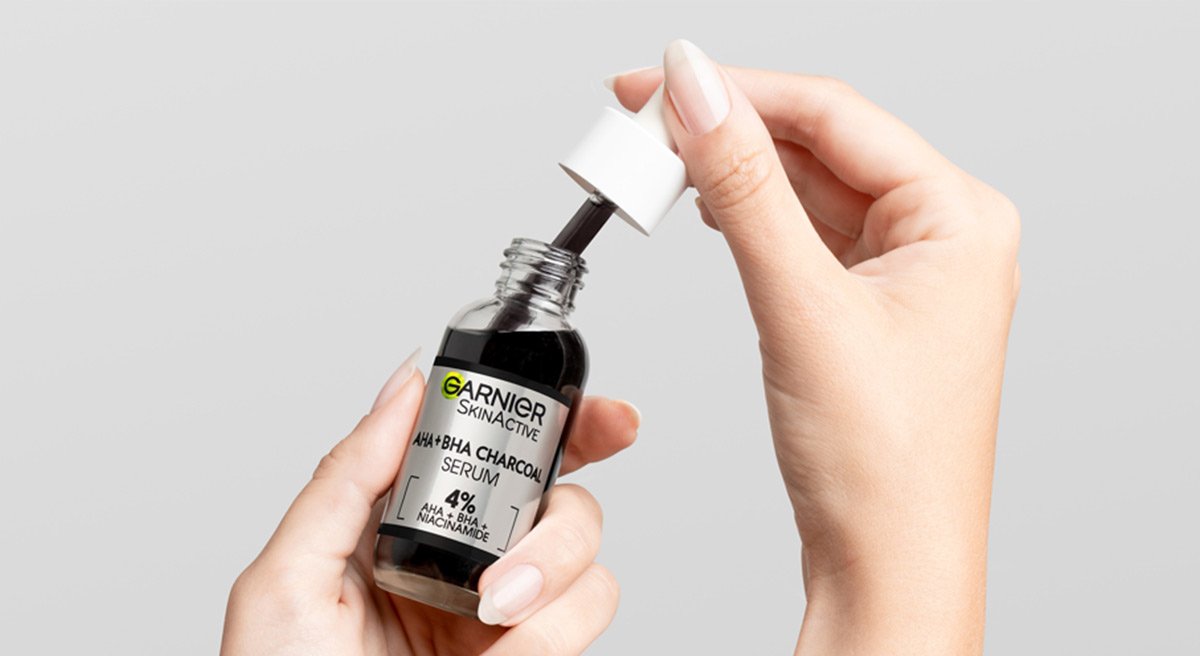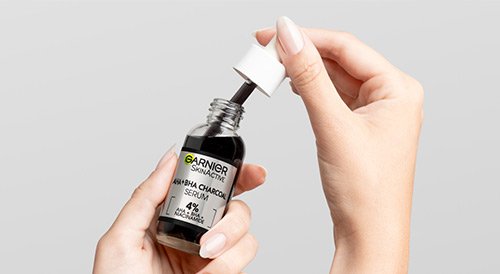Both have their own benefits, so you might be wondering what an AHA and BHA combination does for skin. Is it recommended?
There are many products that include both AHA and BHA ingredients. While AHAs are better for dry skin and BHAs are better for oily skin, if you have normal or combination skin you can benefit from using both at once.
A product containing both might also be a good fit if you’re dealing with several skincare issues at once. For example, if you want a targeted treatment for both clogged pores and wrinkles, using AHA and BHA together can help.
As with any new steps to your skincare routine, the key is to start slowly with lower doses to avoid irritation, and build from there.
It’s also important to consistently use a broad-spectrum sunscreen when you’re using AHAs and BHAs. This is because exfoliating can make your skin more sensitive to the light (aka photosensitive), so it’s vital to prevent sun damage.
Discover Garnier’s face serum with AHA and BHA
Combining these two powerhouse ingredients in one formula, Garnier’s 4% AHA + BHA & Niacinamide Charcoal Face Serum is suitable for blemish-prone skin. The formula is enriched with AHA, BHA, Niacinamide and Charcoal. It targets blemishes and unclogs pores, whilst smoothing the skin's surface. It purifies and leaves the skin mattified for a clear, glowing complexion. The serum is suitable for sensitive skin types and is also suitable for people who may be prone to acne.
So, at what point in your skincare regimen should you use our AHA + BHA serum? It’s a post-cleanse product, meaning that you should use it after you’ve used your facial cleanser, but before you apply moisturiser.






